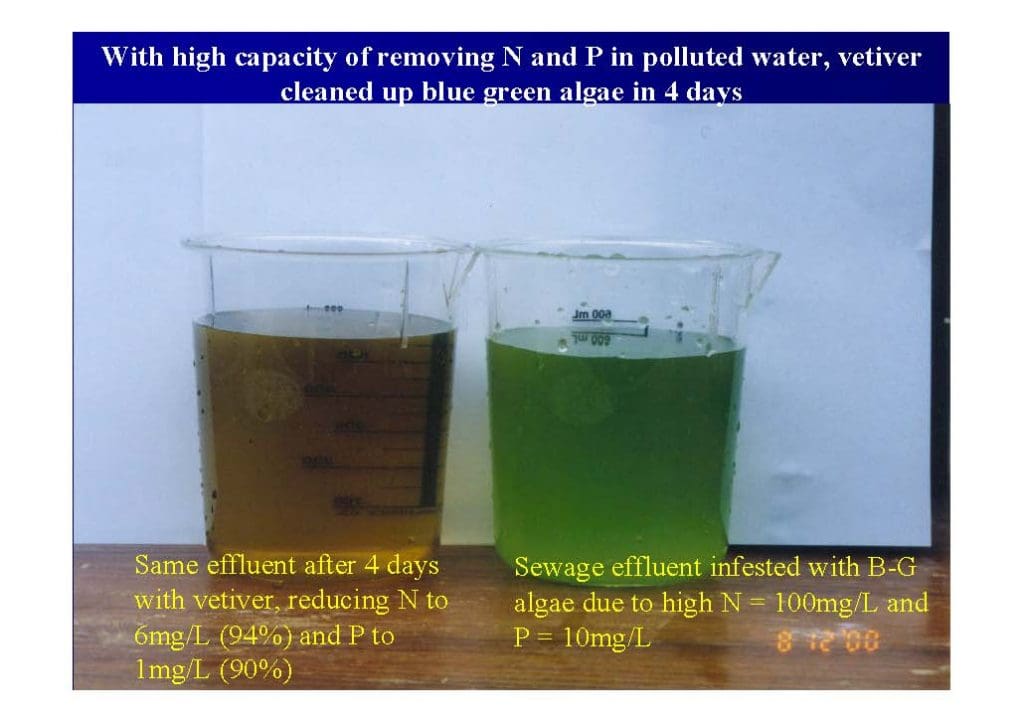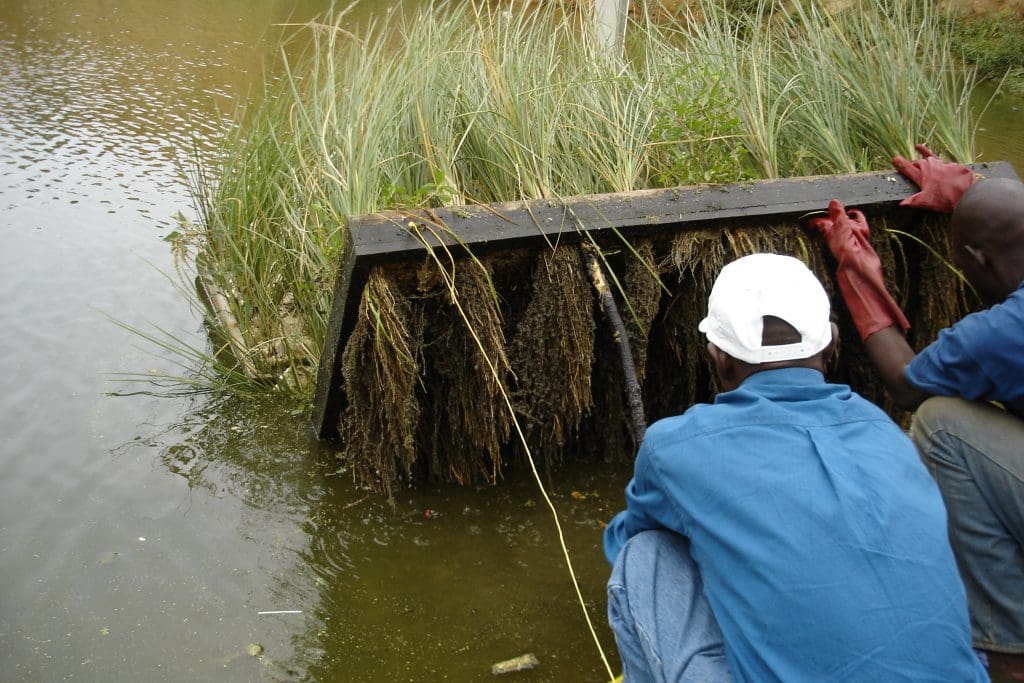The Vetiver System for Contaminated Land and Water
Read: The Vetiver System for Improving Water Quality TVN_Water_quality 2 ed.pdf (vetiver.org)
Vetiver has an extremely high tolerance level of pollutants, particularly nitrate and phosphate, as well as most heavy metals when grown under land and aquatic conditions that most other plants cannot tolerate. Vetiver’s deep and massive root system tolerates drought and water logging. It’s special shoot/leaves architecture, enables a very high transpiration rate under wet conditions that reduces the volume of polluted water. The combination of these features makes vetiver an ideal plant for phytoremediation of both contaminated land and water.
Unlike most of other grasses, Vetiver has a V shaped leaf with a prominent mid rib, which can control the opening or closing of the leaf blades. Under moist or wet conditions, the leaves open up, resulting in higher transpiration rate, and leaf blades thinner with a higher the density of stomata. These characteristics make it ideal for wastewater treatment. The reverse occurs under fry conditions, resulting in lower transpiration rate to conserve moisture. The stiff and erect shoots form a dense funnel shape canopy with leaf angles varying between 45º and 135º, not flat or horizontal like broadleaf plants or most grasses such as Lemon grass and Panicum spp. This shoot architecture has several important implications that improves the efficiency of the plant: the longer sunlight interception of individual leaves as the sun moves from east to west, sunlight interception from both sides of the individual leaf, exposing most of the leaves simultaneously to sunlight, with minimal shading of leaves within the canopy compared to most other plants. Vetiver leaves only bend near the tip and therefore lower leaves are less shaded and are thus more photosynthetic efficient, unlike other grass, such as lemon grass, where the whole leaf bends and shading lower leaves.
Vetiver System for Water Quality Improvement AUS_Water quality.pdf (vetiver.org)

